Hunan highlights heritage, cherished cultural differences of its ethnic groups
 Located in Zixing, a countylevel city under Hunan’s Chenzhou city, Huangcao town is a nationally famous tourist destination with impressive landscape. (PHOTO PROVIDED TO CHINA DAILY)
Located in Zixing, a countylevel city under Hunan’s Chenzhou city, Huangcao town is a nationally famous tourist destination with impressive landscape. (PHOTO PROVIDED TO CHINA DAILY)
The Hunan Provincial Department of Culture and Tourism and the Hunan National Religious Affairs Committee announced 10 new characteristic cultural tourism towns in Hunan for 2020, on July 15 in Changsha, the capital city of the province.
The 10 towns hail from 10 counties in the province’s nine cities and autonomous prefectures, including the Xiangxi Tujia and Miao autonomous prefecture and cities of Huaihua, Zhangjiajie, Changsha and Shaoyang.
The 10 featured cultural tourism towns ... highlight outstanding ethnic customs and have strong potential for tourism attraction
Yu Xinrong, director of the Hunan Provincial Department of Culture and Tourism
The naming of characteristic cultural tourism towns is an effective way for the government to encourage rural revitalization in some areas and accelerate urbanization in others.
“The 10 featured cultural tourism towns chosen this year highlight outstanding ethnic customs and have strong potential for tourism attraction,” said Yu Xinrong, director of the Hunan Provincial Department of Culture and Tourism.
“They will play a great role in promoting integrated development in culture and tourism, as well as targeted poverty alleviation, and are of great significance in accelerating highquality development in Hunan’s cultural tourism industry.”
Looking ahead, the government is to step up its efforts to integrate cultural tourism and agriculture, education, science and technology, manufacturing and finance, aiming to make characteristic towns a shining example of development in Hunan province, according to the local government.
Hunan now has a total of 20 characteristic cultural tourism towns, of which the first 10 were announced in October.
The first 10 featured towns have all increased their cultural tourism revenue, tax revenue and tourist arrivals by more than 10 percent yearonyear, according to the local government.
Furong town in Yongshun county, Xiangxi Tujia and Miao autonomous prefecture, was among the first 10 characteristic cultural tourism towns launched in 2019, and has experienced rapid growth in emerging industries and tourism revenue in the past a year.
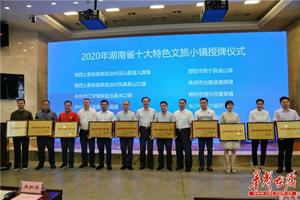 The Hunan province launches 10 new characteristic cultural tourism towns for 2020, on July 15 in Changsha. (PHOTO PROVIDED TO CHINA DAILY)
The Hunan province launches 10 new characteristic cultural tourism towns for 2020, on July 15 in Changsha. (PHOTO PROVIDED TO CHINA DAILY)
Qin Xiao, 26, is a tour guide in Furong. Qin’s whole family used to lived in a battered wooden house and scrapped a living from the farming. Nowadays, thanks to the increase in cultural tourism, Qin’s family’s livelihood has significantly improved.
“I witnessed the town’s transformation from a desolate place to a prosperous one,” Qin said. “Now, my husband works as a security guard at a scenic spot, my f a t h e r i n l a w works on rafting boats and my motherinlaw is employed in catering. Our income has increased substantially.”
In as early as 2009, Hunan launched a protection and development campaign aimed at its villages and towns with ethnic group characteristics.
Over the past decade, the province has led by example in developing characteristic culture, tourism and industries, to help ethnic group areas rid themselves of poverty and boost local urbanization.
“Villages and towns with ethnic group characteristics in Hunan province are generally located in remote areas, which were closed off to traffic and with backward economies,” said Xiang Enming, director of the Hunan National Religious Affairs Committee. “And because of that, we’ve been left with a wealth of cultural and natural treasures of ethnic groups that are precious and unrepeatable.”
There are currently 87 villages in Hunan that have been named as “villages with ethnic groups characteristics of China” by the National Ethnic Affairs Committee.
Fascinating places offer multitude of historical sites and experiences
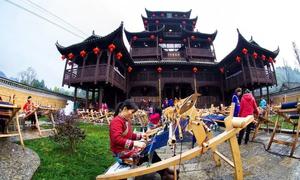
Miaoertan town
Located in Longshan county, Xiangxi Tujia and Miao autonomous prefecture, Miaoertan town is notable for its traditional Tujia culture and diverse intangible cultural heritage, including the Tujia dialect folk song, Tujia traditional dance and Tujia brocade. In 2019, the town received 450,000 tourists, achieving a tourism revenue worth 90 million yuan (US$13 million). It is expected that in three years, it will receive 1 million tourists.
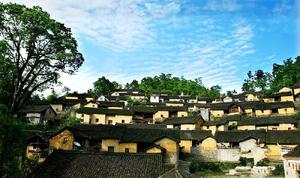
Shanjiang town
Located in Fenghuang county, Xiangxi Tujia and Miao autonomous prefecture, Shanjiang is a town typical for the Miao ethnic group. With four national-level traditional villages, two historic and cultural villages and one village with ethnic minority characteristics, Shanjiang town is a national center for the preservation and inheritance of Miao culture and a national Miao culture travel destination. Last year, the town received 2 million tourists, with tourism revenue totaling 571 million yuan.
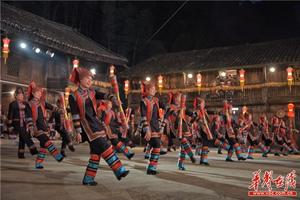
Shuikou town
Situated in Jianghua Yao autonomous county in Yongzhou city, Shuikou town has a distinct natural ecological landscape and the colorful culture of Yao ethnic group. By developing the Yaodu water street tourism project, Shuikou town is working on forging a full-chain tourism industry involving sightseeing service, water amusement park and folk-custom accommodation. The town welcomed 320,000 tourists last year, generating 135 million yuan in revenue.
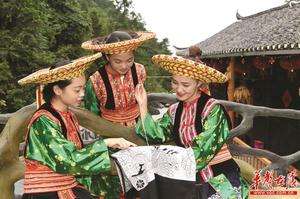
Beidouxi town
Beidouxi town is located in Xupu county, Huaihua city, and has won the honorary titles of Hunan’s beautiful town, Hunan’s ecological town and Hunan’s characteristic cultural tourism town. Beidouxi town is working on promoting its homestay travel, study travel and special agricultural products. In 2019, Beidouxi town received 300,000 tourists, with tourism revenue reaching 60 million yuan. It is estimated that in three years, the town will welcome 1 million visitors and achieve a total tourism revenue of 200 million yuan.
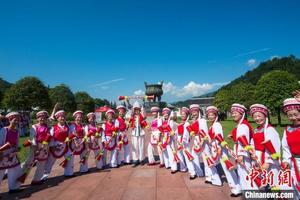
Hongjiaguan Bai ethnic group township
Located in Sangzhi county of Zhangjiajie city, Hongjiaguan Bai ethnic group township is the largest cluster area of Bai ethnic group in Hunan province. In recent years, the township has worked on integrating “red tourism” — tourist attractions with a revolutionary legacy — and the Bai culture. A raft of red tourism projects, including the national Long March cultural theme park and a “red culture” research base. Last year, the township received 1.6 million tourists in total.

Langshan town
Situated in Xinning county of Shaoyang city, Langshan town is notable for its Langshan Mountain Scenic Spot, which is a world natural heritage site, a national 5A tourist attraction and national geopark. Langshan town has more than 30 homestay hotels, more than 200 agritainment hotels, two cultural and performing arts centers and three shopping blocks, forming a complete tourism industrial chain. In 2019, the town welcomed more than 5.83 million tourists, with tourism revenue totaling 760 million yuan.

Luyuan town
The Luyuan town is located in Yanling county of Zhuzhou city and is rich in cultural tourism resources. Xicaoping village of the town is selected as a traditional Chinese village and a demonstration village of rural revitalization in the border area between Hunan and Jiangxi provinces. Aiming to forge its cultural tourism into a leading industry to promote its high-quality development, Luyuan town welcomed 1.37 million tourists last year, achieving tourism revenue worth 756 million yuan.

Huangcao town
Located in Zixing, a county-level city under Chenzhou city, Huangcao town is a national scenic town with favorable environment, a nationally famous tourist town with characteristic landscape and a national livable town. With its efforts paid in developing fishing culture, immigrant culture, traditional cultivation culture and folk customs and culture of Yao ethnic group, Huangcao town has founded distinctive cultural tourism festivals. It received 600,000 tourists in 2019, with total tourism revenue reaching 327 million yuan.

Kaihui town
Kaihui town is located in Changsha county of Changsha city, the capital of Hunan province. It is the hometown of Yang Kaihui, the beloved wife of Chairman Mao Zedong; and Miao Boying, the very first female member of the Communist Party of China. There are nearly 40 cultural relics protection sites in Kaihui town. Promoting red tourism and rural experience tourism, the town received 2.5 million tourists last year, generating tourism revenue of 860 million yuan.

Hupingshan town
Located in Shimen county of Changde city, Hupingshan town is an ecological tourism demonstration area and a famous characteristic tourism town in Hunan province. The town is notable for its traditional Tujia buildings, folk song and dances. By introducing tourism development companies, the town works on creating performances and activities with the theme of its black tea culture and Tujia culture. By exploring its tourism resource and developing industries related to cultural creativity and cultural integration, the town welcomed more than 1.6 million tourists in 2019, with tourism revenue totaling 780 million yuan. The town is expected to receive 2 million tourists in three years, with annual tourism revenue of 1.2 billion yuan.
Zhu Youfang contributed to this story.


